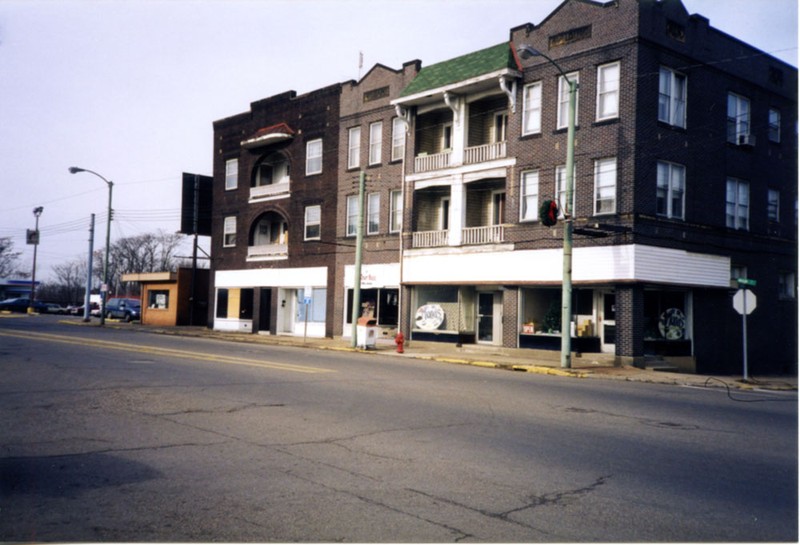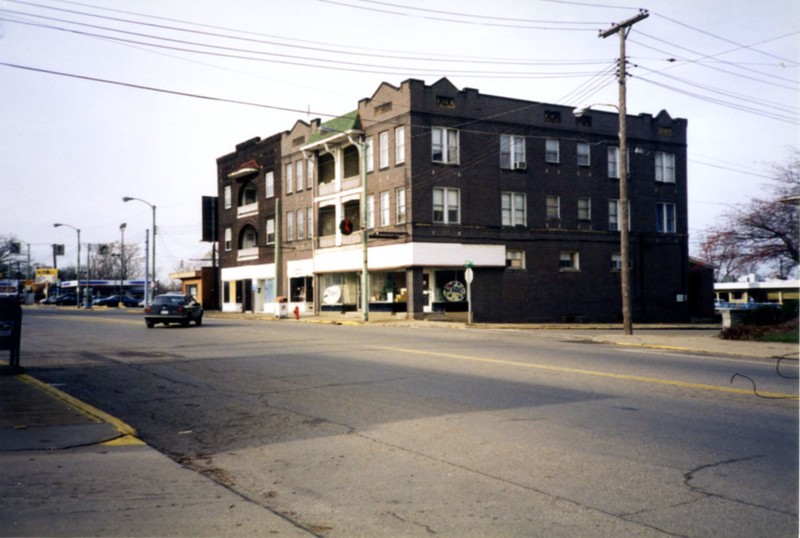Williams Building
Introduction
Text-to-speech Audio
Dating back to 1915, the Park Building emerged as a response to the post-World War I housing shortage, replacing three smaller residences on the same land. Originally constructed as apartments, it reflects early 20th-century commercial style with Moorish Revival details, featuring notable elements like elongated arch openings and a historic hipped roof projection. Meanwhile, the Williams Building at 66 E. Main Street, completed between 1916 and 1918, seamlessly integrates into the early 20th-century commercial aesthetic, housing apartments on the upper levels and hosting Casselman Plumbing, Ramsey Auto Supply, and the Alliance Restaurant on the lower level. The building's distinctive gray and white washed red brick exterior, accentuated by stone plaques bearing its namesake, contributes to its enduring charm.
Images
70 E. Main Street, 1998

70 E. Main Street, 1998

Backstory and Context
Text-to-speech Audio
Constructed around 1915, the Park Building, originally built as apartments, replaced three smaller residences on the same land. In response to a housing shortage following World War I, this transformation addressed the growing demand for accommodation. Among the notable residents on this land in 1900 was Derrell Patterson, a Carbon Trimmer, a skilled laborer crucial for maintaining early electric lights, particularly the carbon rods of early arc lamps. The Park Building, designed in the early 20th-century commercial style with Moorish Revival details, features modular brick masonry and minimal projections. Noteworthy Moorish elements include elongated arch openings and shadow lines on the historic hipped roof projection at the second story, likely made of clay tiles. The building also incorporates a central skylight and light well, historically used to illuminate the interior's vertical circulation and stairwell.
Constructed between 1916 and 1918, the Williams Building seamlessly blends into the early 20th-century commercial style. The upper levels served as apartments, while the lower level housed Casselman Plumbing, Ramsey Auto Supply, and the Alliance Restaurant. Towards the rear, an original freight elevator facilitated the movement of plumbing and auto supplies for Casselman and Ramsey businesses. The distinctive gray and white washed red brick exterior of the building, adorned with stone plaques bearing its namesake, showcases its timeless appeal.
Cite This Entry
Historical Society, Alliance. "Williams Building." Clio: Your Guide to History. June 11, 2024. Accessed March 31, 2025. https://theclio.com/tour/2585/2

